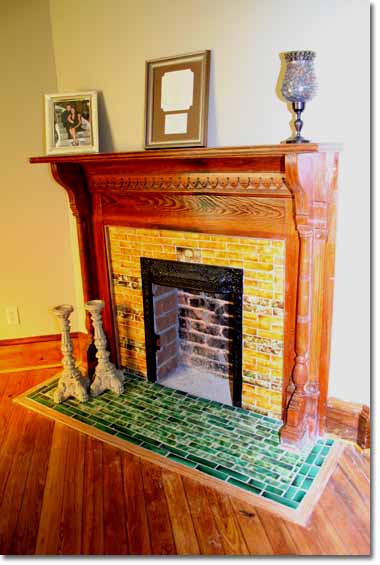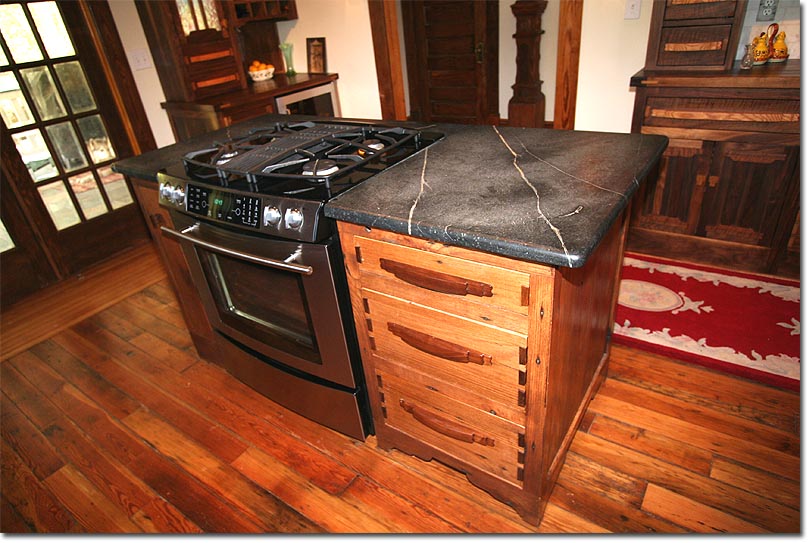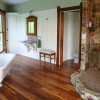I relish putting antique materials back where they belong. Re-hanging mantels back onto raw brick openings in old houses; installing hundred year old medicine cabinets into the wall cavity of a bathroom, complete with imperfect beveled mirrors, the silvering flawed and interesting; or hanging vintage 1880s ceiling tin on a new kitchen ceiling addition to give it the shine and smattering of rust of a century past. These deft touches, even say in a bathroom with all new tile, plumbing fixtures and smooth new drywall, give the room panache. The eye is instantly drawn to the reclaimed piece, which infuses the space with personality, character, warmth and the thing sadly lacking in a lot of new houses or additions today: uniqueness.
One of my favorite ways to recycle old house parts is to use them in unexpected ways. For example, my kitchen cabinets were milled from antique oak floor joists. This is storied
wood. First it was a tree felled locally and then milled approximately 110 years ago to frame an old house in the West End of Atlanta. Likely, this old tree was sited on the land where the house was to be built. The 2×10 inch planks were the home’s floor joists. But when my dumpster diver brought this wood to me, I saw the potential for beautiful rustic oak cabinets. I had them milled by a team of talented woodworkers into a Greene & Greene designed kitchen, inlaid and accented with walnut mortised sides and curvy carved handles. In the process of working the wood, a fascinating discovery was made: a bullet was located in one of the boards. By counting the rings around metal, we estimated that the bullet dated to the Civil War era. This bullet now is a part the front panel of my kitchen island.
I love it when the utilitarian becomes the aesthetic. Some other examples of creative repurposing are: use antique fire place tile as a kitchen backsplash, use a small mantel to frame a bathroom mirror, set antique piano legs as spindles in a stairwell.
Additional ideas:





